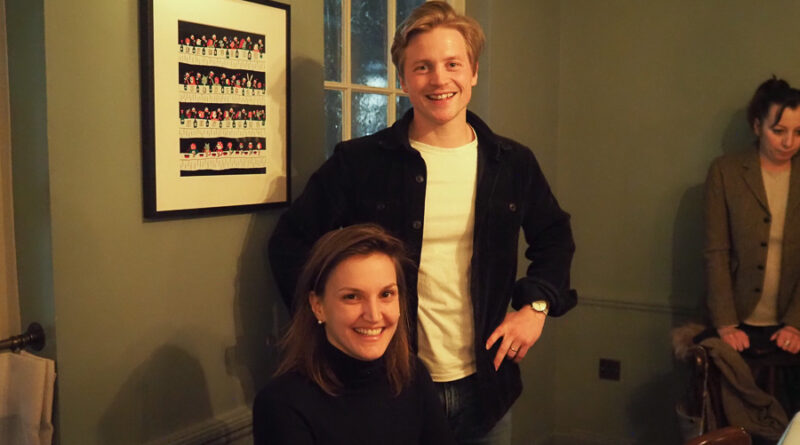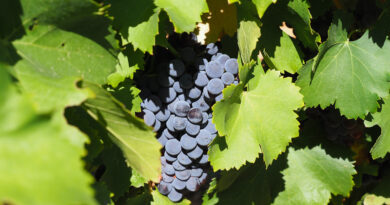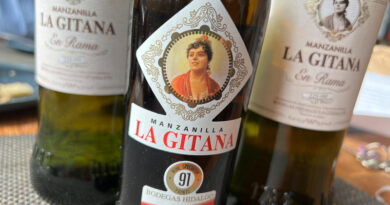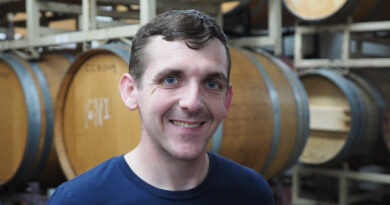The Petit-Boxler family and their new Champagne-Alsace venture: Domaine La Rogerie
This is a remarkable project from a young couple who span two wine regions. The Petit-Boxler family brings together François Petit from Champagne and Justine Boxler from Alsace (Alsace fans will recognize this name; her cousin is is Jean Boxler). They met together when they were studying at university in Strasbourg, in 2011, and as both had two hectares each in their respective wine regions, they decided to create a domaine of two terroirs.
This is highly unusual: normally, you’d expect them to choose one. But after tasting the wines, I can see how this might work. There’s an aesthetic sensibility that is shared by both projects.
The Champagne project is based on 2 hectares of vines in Avize planted by François’ great grandfather and grandfather, between the 1930s and 1950s. ‘So we only have old vines,’ he says. Some were massale selection. ‘It is wonderful to have such old vines.’ The yields are low, with an average vine age of 80 years old. They use horses to plough, partly to preserve these old vines, and farming is organic, and they make their own compost.
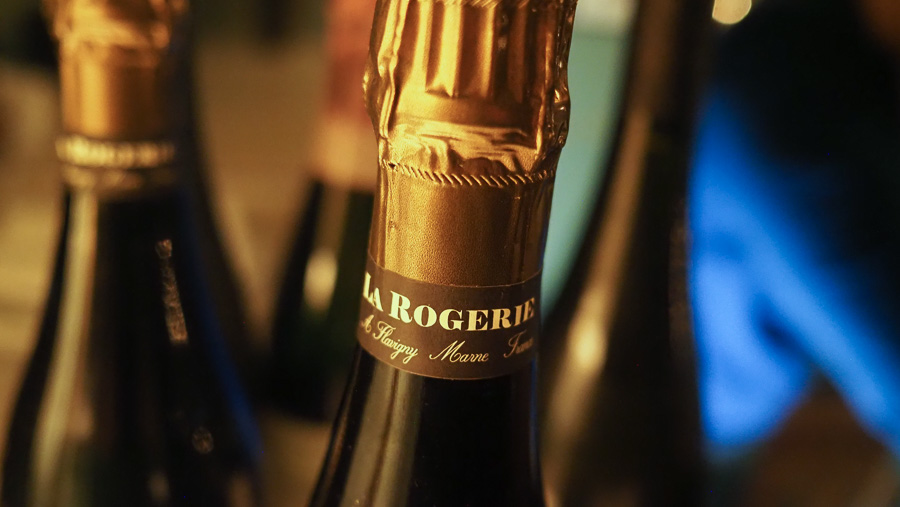
After they met and became a couple, she went to work for a while in Vietnam, while he worked in London for Champagne & Chateaux, an import agency. They then decided to form the domaine in 2015, and from 2015 to 2018 they just focused on the vineyards, selling the grapes and not making wine. Justine and François made their first Champagne in 2018, but had to wait another four years to release it. It’s complicated to manage the cashflow. ‘Especially when you don’t have enough grapes to sell some,’ says Justine. ‘Our idea as soon as we took over the plots was to vinify them. We never sold any grapes.’
‘Most of the new generation, when they take over the vineyard, they sell some grapes to make cashflow and make wine with the rest,’ says François. ‘But our vineyard is so small we can’t do this.’
His father and grandfather used to sell the grapes, just keeping a few to make a cuvée of their own, and they began their project
They would like to expand, but has become problematic buying good vineyards in the Côte des Blancs. ‘When there is a very small plot of vines to sell, there are hundreds of people who want to buy it. It is very hard to get more land.’ SAFER is involved, ‘but they don’t do a good job.’ Justine adds, ‘they are always saying they want to focus on the small producers and the young growers. We have the perfect profile.’ François says they have applied 10 times, and always the vineyards go to people who just sell grapes.
‘We know where we want to be,’ says François, ‘but the path is long!’
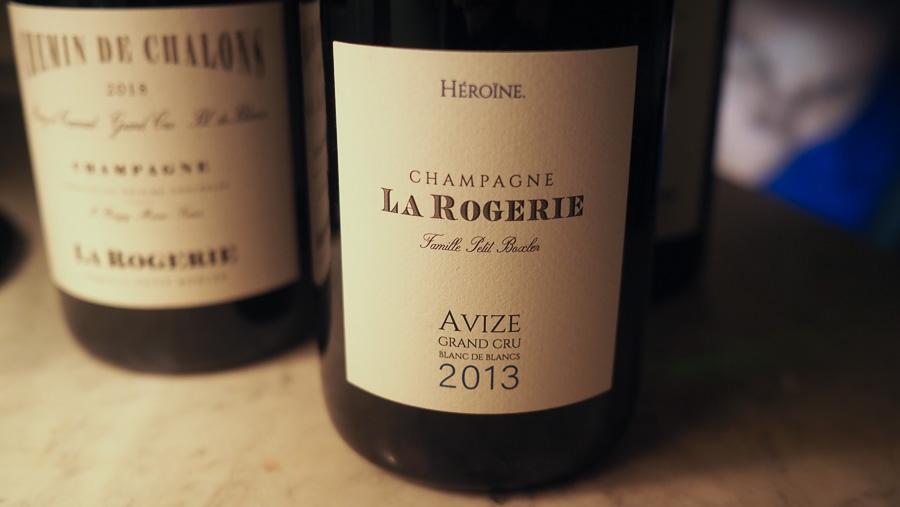
Champagne La Rogerie Heroine Blanc de Blancs Grand Cru 2013 France
This wine is from François’ father’s stock. ‘He kept a lot of Champagne in his cellars to sell on his retirement,’ says François. ‘When we came back to France I asked my father: we want to start something new but we need to sell something before we sell our own wine. We were lucky to be able to sell some back vintages from 2008-2016.’ It’s from Avize and the base wine was matured in stainless steel. This spends 7 years on the lees and was disgorged with a dosage of 2 g/litre. Lively and focused with taut citrus fruit. Very fine with a slight saltiness. Pristine and quite mineral with a fine acid line. 93/100
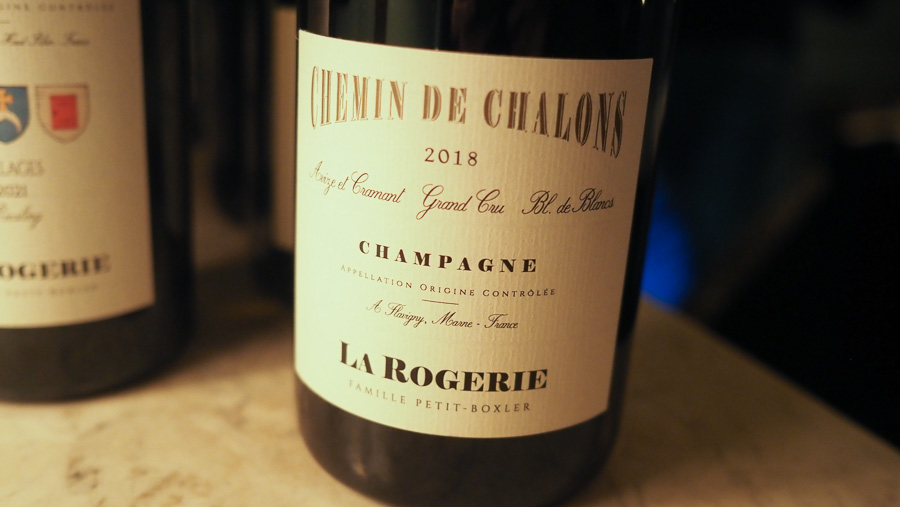
Champagne La Rogerie Chemin de Chalons Grand Cru 2018 France
This is from a single vineyard that spans the border of Avize and Cramant. One plot is in Avize planted in 1959, and one is in Cramant planted in 1937. They are harvested and pressed the same day. Chemin de Chalons is well known because of Selosse, who makes a wine from here. There are 60 cm of clay and silex soils, then chalk. This chalk is a bit more decomposed than the chalk found higher in the village where it is stronger. Every three years they dig a bit to see the profile: the roots go deeper in this vineyard because of the decomposed chalk. The grapes are pressed without settling into different sizes and ages of oak barrel, ranging from 228 litres to 400 litres. Bottling is after 11 months at the end of July, which is late. This is fine, saline and pure with high acid, integrated so well with the focused citrus fruit. Such precision with some waxy notes. Very fine, delicate and bright but with good concentration. Such finesse. 94/100
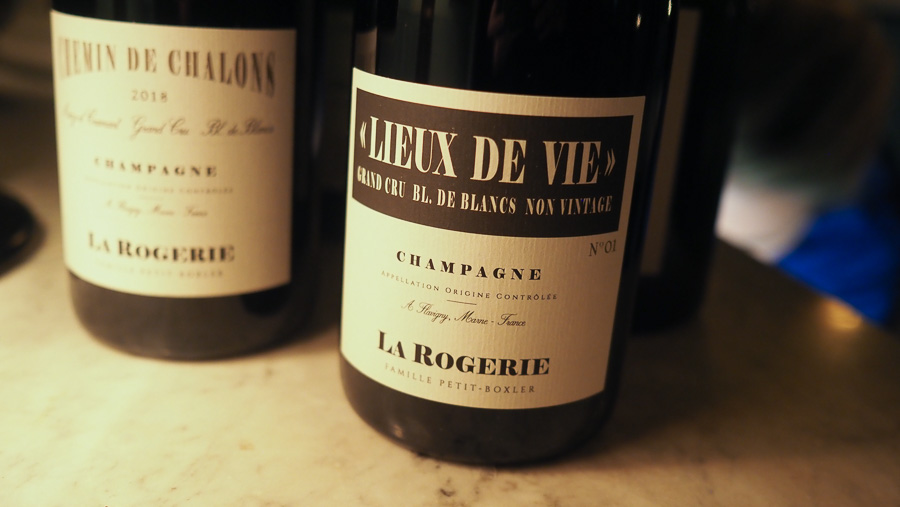
Champagne La Rogerie Lieux de Vi N.I. Grand Cru NV
This is 40% of 2018 (in barrels) and 60% of 2019. 1 g/l dosage. Reserve wines are in foudres. Such precision with crystalline citrus fruit and a slight salinity. Good concentration and freshness: this is youthful but really layered with nice complexity. Finishes fine and detailed. 94/100
Then we head 300 km east to Alsace. The first wine is a blend of Pinot Blanc, Pinot Auxerrois and Pinot Noir. It isn’t co-planted, but different parcels are picked at the same time and cofermented together. This is aged in Champagne barrels, and they like to use lots of lees, ageing for 11 months in barrel.
In 2018 they started a perpetual reserve, so this wine has 2018, 2019 and 2020 for 30%, with 70% of 2021. In Champagne they pick as late as they can, but in Alsace they do the reverse, trying to pick early. ‘We don’t really like the high aromatic profile with high alcohol or some residual sugar,’ says François. ‘We like to keep the freshness. Our vinification is different from the traditional way in Alsace. They used to pick very ripe and they would block malolactic through sulfite addition, cold and racking. We don’t do that, so we pick a bit earlier to keep the natural freshness of the fruit.’
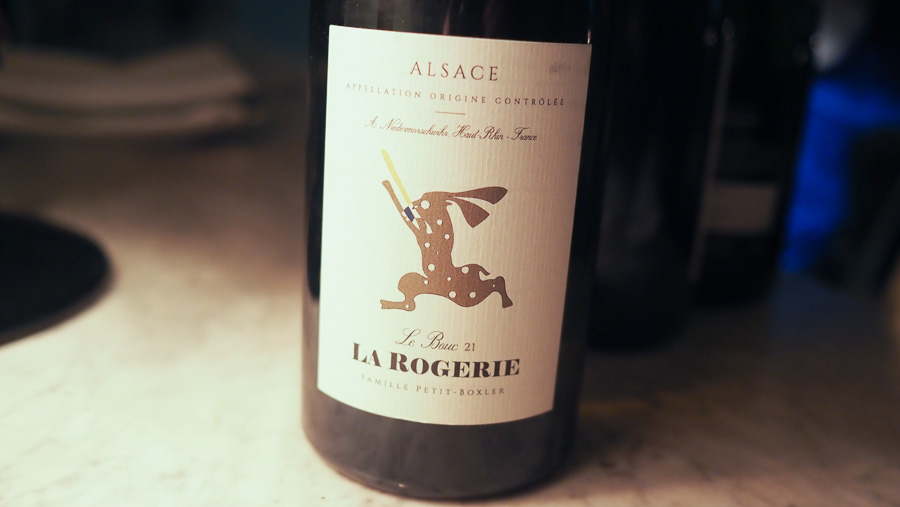
La Rogerie Pinot Blend Le Bouc de la Rogerie NV (2021 release) Alsace
Pinots on granitic soil. Lovely weight here: crystalline citrus fruit with nice acidity. Fine grained and bright with nice acidity, but also some innate richness. So fine and precise with a linear personality.
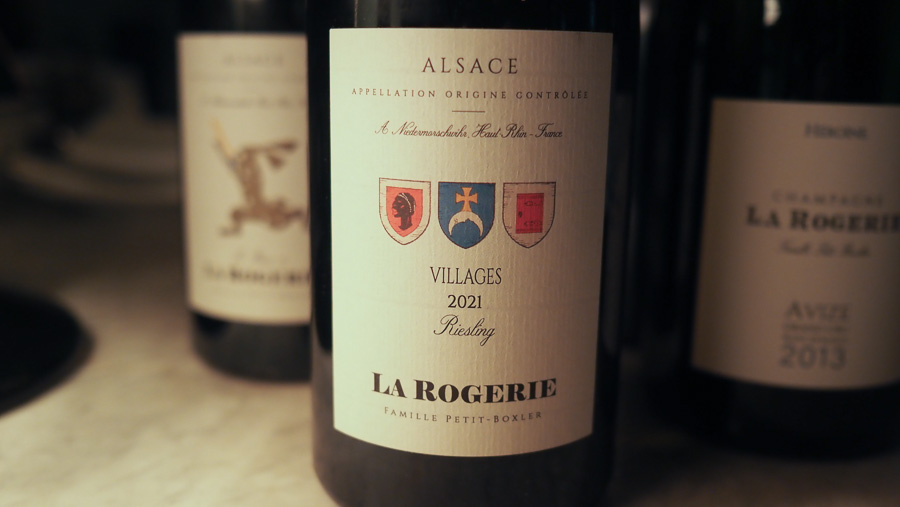
La Rogerie Riesling Village 2021 Alsace
This is three plots from three villages (Niedermorschwihr, Katzenthal and Turckheim), all granite soils, at the bottom of the grand crus. There is more clay here than in the grand crus. Very pure, dry and crisp. Limey and focused. There’s a strong acid line here with a stony mineral edge to the lemon and lime fruit, with good acidity. So fresh and focused. Finishes bright stony and limey. 94/100

